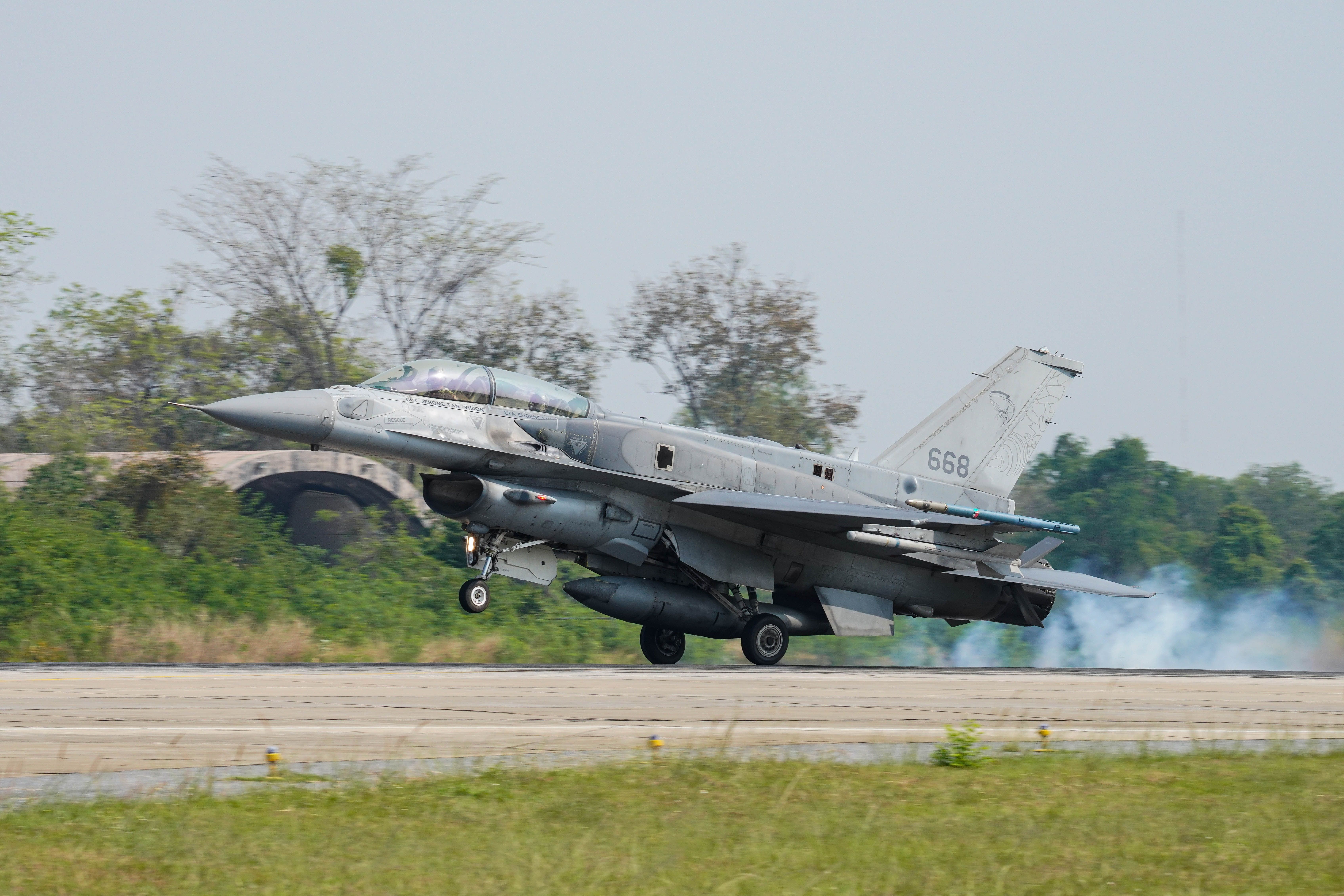Summary
- Root cause of RSAF F-16 crash at Tengah Air Base due to degraded pitch rate gyroscopes, fed false inputs.
- Investigation found gyroscope 2 and 3 gave similar false inputs, which led to Flight Control Malfunction Warning.
- RSAF implementing enhanced testing of gyroscopes in preventive maintenance procedure to detect degradation early.
Singapore’s Ministry of Defense has released its final findings on the Republic of Singapore Air Force (RSAF) F-16 crash at Tengah Air Base last month. The investigation determined that the root cause of the crash was due to degraded pitch rate gyroscopes, which then fed false inputs to the fighter jet’s Digital Flight Control System.
Singapore concludes F-16 crash investigation
As Simple Flying reported last month, an RSAF F-16C crashed at Tengah Air Base shortly after take-off during a routine training exercise, with the pilot ejecting safely from the aircraft. According to a final update by the Ministry of Defense of Singapore (MINDEF), the crash – the first involving an RSAF F-16 in over 20 years – occurred due to wear and tear in two of the jet’s four pitch rate gyroscopes, which deliver pitch rate inputs to the aircraft’s onboard Digital Flight Control System.
Photo: Phuong D. Nguyen | Shutterstock
Despite pre-flight checks not revealing any issues with the sensors, gyroscopes 2 and 3 gave “erroneous but similar inputs” as the plane took off. While gyroscope 1 provided correct inputs, the aircraft’s flight computer rejected it as the information differed from gyroscopes 2 and 3. The jet’s fourth gyroscope also activated, but this too was rejected and a Flight Control Malfunction Warning was triggered. As per the investigation report,
“Two out of four pitch rate gyroscopes in the F-16 gave erroneous but similar inputs to the Digital Flight Control Computer. This resulted in the flight control logic accepting the similar erroneous inputs as “correct”, and sequentially rejecting the inputs from each of the remaining functioning gyroscopes as “incorrect”.”
Photo: MINDEF
At this point, the Digital Flight Control System was maneuvering based on false inputs from the degraded gyroscopes. The pilot determined that the aircraft was no longer controllable and made the decision to eject. The investigation was supported by F-16 manufacturer Lockheed Martin and Singapore’s Transport Safety Investigation Bureau. Lockheed Martin states that this is the first crash involving malfunctioning gyroscopes since the F-16 first flew 50 years ago.

Related
RSAF F-16 Jet Crashes At Tengah Air Base
An unspecified flight control problem forced the pilot to eject after taking off.
Maintenance procedure changes
The RSAF has now implemented “an additional preventive maintenance procedure” that will subject each gyroscope to enhanced testing. Under the new protocol, RSAF engineers will regularly disassemble and test gyroscopes with specialized equipment. This proactive approach will help to uncover any early signs of degradation.
Photo: DLeng | Shutterstock
The country’s air force had grounded its entire F-16 fleet in the wake of the crash, which occurred on May 8th, suspending all training. Having inspected its fleet, including each gyroscope one by one, the RSAF resumed F-16 flights on May 21st. The investigation found no problems with the RSAF’s maintenance protocol, concluding that the jet had been serviced in accordance with protocol, and pre-flight tests indicated no issues either. The RSAF operates a fleet of 60 F-16s, which it will continue to operate for the next decade until they are phased out in favor of the F-35 Raptor.

Related
How Has The F-16 Evolved Since Its Introduction?
The F-16 celebrates its golden anniversary this year. However, the plane hasn’t remained frozen in time, but rather has continued to evolve.




